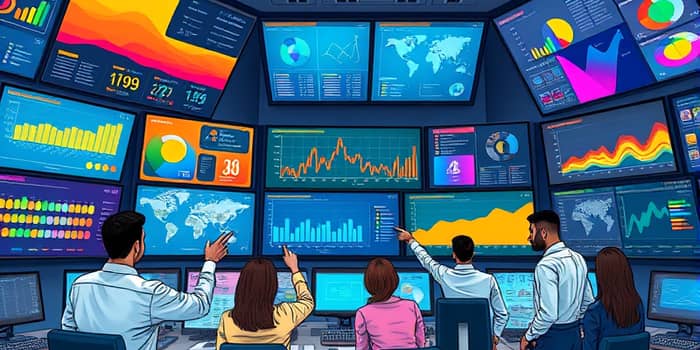
In a landscape driven by constant change, the power to extract insights instantly has become a game-changer. Visual dashboards condense sprawling datasets into clear, actionable visuals, empowering leaders and teams to identify trends, anomalies, and opportunities at a glance. By turning raw numbers into compelling graphics, organizations can foster agile responses and sustain competitive advantage.
Visual dashboards are centralized, visual presentation of data tools that collate business, operational, or program metrics into a single interface. They leverage charts, graphs, gauges, and maps to distill complexity and deliver high-level overviews. Whether displayed on large screens in a boardroom or accessed on mobile devices, these dashboards provide stakeholders with a unified perspective on performance indicators.
At their core, dashboards harness interactivity and automation. Users can apply filters, drill down into specifics, or customize views on the fly. The result is an experience that supports both quick scans and deeper dives, making insights both accessible and engaging.
Organizations that embrace dashboards often report dramatic gains in efficiency and collaboration. By automating data consolidation and visual rendering, teams save countless hours previously spent on manual reporting. Furthermore, shared dashboards break down silos, enabling cross-departmental alignment and collective ownership of key metrics.
Different use cases demand distinct approaches. By aligning dashboard design with specific objectives, organizations can maximize impact and clarity.
Designing an impactful dashboard goes beyond aesthetics. It requires empathy for the end user, clarity of presentation, and discipline in content selection.
Rolling out dashboards successfully requires strategic planning and stakeholder engagement. Begin with a pilot program, selecting a small team and a few critical metrics to validate concepts. Gather feedback actively to iterate on design, functionality, and data sources.
Establish a single source of truth by centralizing data pipelines and enforcing data governance. Automate refresh cycles to ensure dashboards reflect the latest information. Finally, provide training and support materials so users can confidently navigate, customize, and interpret their personalized views.
Adoption hurdles often stem from poorly defined objectives, technical constraints, or change resistance. Address these issues by:
By fostering a culture that values transparency and continuous improvement, organizations can keep dashboards relevant and actionable over time.
As technology evolves, dashboards will incorporate advanced features such as predictive analytics, natural language queries, and augmented reality overlays. Artificial intelligence will anticipate trends and recommend actions directly within the interface, further accelerating reaction times and strategic planning.
Embracing these innovations means preparing data architectures, refining governance models, and empowering users with automated predictive insights and recommendations. Organizations that stay ahead of these trends will unlock unparalleled levels of agility and foresight.
Visual dashboards transform raw data into compelling narratives, enabling leaders to make informed decisions with speed and confidence. By adhering to user-centered design, automating data flows, and fostering collaboration, teams can harness the full potential of real-time monitoring. As the landscape of business intelligence continues to advance, those who invest in intuitive, interactive dashboards will drive performance, innovation, and sustained growth.
References













